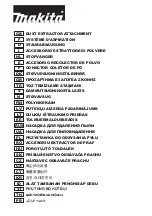
8
• Remove excess and loose sealer tape from valves and connections, including flume
connections.
• Turn the water supply on.
• Set the make-up float valve so the water shuts off at the operating level, see
Table 2
on
page 22
and
Figure 17
on
page 23
.
• Ensure proper water treatment. Refer to
page 30
for details.
• Verify the voltage stated in the submittal package matches the incoming power at the
job site.
• Verify that the supply power is connected to the iPilot® Control System.
• Verify that Building Management System (BMS) interface is correctly wired to the
iPilot® Control System.
• Turn on all breakers inside the iPilot® Control System.
• Close the iPilot
®
Control System panel and ensure that all the locks have been fully
engaged and secured by rotating them 90° with a flathead screwdriver or coin.
• Turn on the main power supply to the unit.
• Verify wiring from each component to the iPilot® Control System.
• Verify component operation by entering the Main Menu of the user interface, select
Point Overview, and change Manual Mode to On. Refer to the “iPilot® Control System
Appendix” on
page 45
.
• On units that are powered with 230/460V three phase, the power must be connected
properly to ensure that the pumps rotate clockwise. The wiring should be installed to
have incoming power U phase connected to panel L1, V phase to L2, W phase to L2,
and E phase to ground. It is recommended that a rotation meter be used to confirm
the power is connected to allow clockwise operation. Failure to ensure correct phase
wiring will result in reduced spray pump water flow, reduced thermal performance, and
possible excessive scale buildup.
• Verify that fan(s) are rotating in the correct direction (clockwise when looking into the
unit from the outside) by operating each component in “Manual mode”.
• Check for unusual noise or vibration.
• To flush dirt, debris, and oils from the basin and from the heat exchanger exterior,
operate the fans at 350 rpm, per the instructions in Appendix screen V10, and
operate the pumps, per the instructions in Appendix screen V04.
• After verifying component operation, re-enter the Main Menu and change Manual
Mode to Off and ensure that operational system value (OSV) is Off so that the iPilot
Control System can cycle fans and pumps appropriately.
Start-Up
• For initial start-up, clean the conductivity sensor after two weeks of service.
• Ensure that main disconnect switch on the iPilot
®
Control System is turned On.
The iPilot® Control System will arrive onsite preconfigured with factory default values and
requires field setup. There are three methods of equipment control:
1. Local control without a Building Management System (BMS) interface
2. Local control with a BMS interface (See
Table 15
on
page 57
for the BMS
data points).
3. Customer Input: Control using analog input (0-10 VDC, 10-0 VDC,
or 4-20 mA) by others.
DANGER:
Rotating equipment
will cause severe personal injury
or death to persons who come in
contact. Do not perform any service,
maintenance, or inspection on or
near the fans, motors, or inside
the unit without first ensuring
that the fans and pump motors
are disconnected, locked out, and
tagged out.
WARNING:
Dangerous voltages
are present in this equipment.
Disconnect the electrical service
of the source and tag the circuit
out before servicing or replacing
components.
Содержание NEXUS NXF-0403N-CS2TS-H1
Страница 1: ...OPERATION MAINTENANCE MANUAL...











































